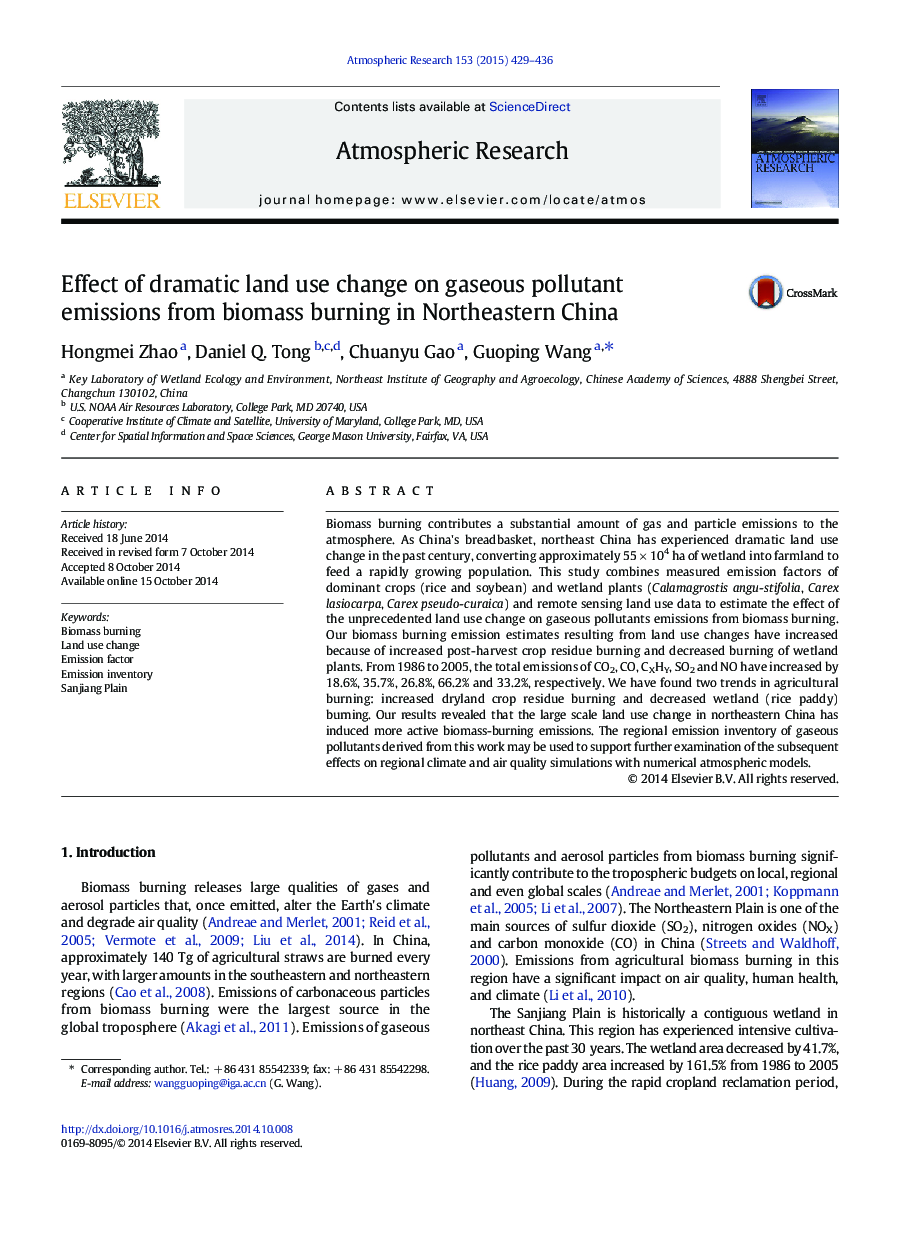| Article ID | Journal | Published Year | Pages | File Type |
|---|---|---|---|---|
| 6343434 | Atmospheric Research | 2015 | 8 Pages |
â¢Gaseous pollutant emission factors were significantly different among various plants.â¢Land use changes are associated with increases in biomass burning emissions.â¢The increase in gaseous pollutants was due to land use change from wetland to dry cropland.
Biomass burning contributes a substantial amount of gas and particle emissions to the atmosphere. As China's breadbasket, northeast China has experienced dramatic land use change in the past century, converting approximately 55Â ÃÂ 104Â ha of wetland into farmland to feed a rapidly growing population. This study combines measured emission factors of dominant crops (rice and soybean) and wetland plants (Calamagrostis angu-stifolia, Carex lasiocarpa, Carex pseudo-curaica) and remote sensing land use data to estimate the effect of the unprecedented land use change on gaseous pollutants emissions from biomass burning. Our biomass burning emission estimates resulting from land use changes have increased because of increased post-harvest crop residue burning and decreased burning of wetland plants. From 1986 to 2005, the total emissions of CO2, CO, CXHY, SO2 and NO have increased by 18.6%, 35.7%, 26.8%, 66.2% and 33.2%, respectively. We have found two trends in agricultural burning: increased dryland crop residue burning and decreased wetland (rice paddy) burning. Our results revealed that the large scale land use change in northeastern China has induced more active biomass-burning emissions. The regional emission inventory of gaseous pollutants derived from this work may be used to support further examination of the subsequent effects on regional climate and air quality simulations with numerical atmospheric models.
